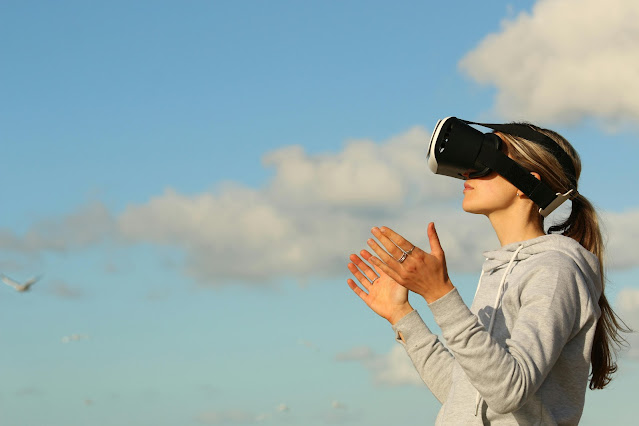Introduction:
In the grand tapestry of human ingenuity, few threads shine as brightly as Virtual Reality (VR) and its convergence with automation. With each passing day, we find ourselves venturing deeper into the digital unknown, propelled by the boundless potential of immersive experiences and automated systems. At the heart of this convergence lies a potent fusion of technology and imagination, reshaping the landscape of human interaction with the digital realm.
Virtual Reality, once the domain of science fiction, has transcended its speculative origins to become an indispensable tool for innovation and exploration. Through a symphony of hardware and software advancements, VR transports us to realms both fantastical and mundane, blurring the lines between reality and simulation. As we don our headsets and step into these digital landscapes, we embark on a journey where the constraints of the physical world melt away, leaving us free to explore, create, and collaborate in ways previously unimaginable.
Automating the Virtual Frontier:
Yet, it is not merely the immersive experiences that captivate our imagination, but the seamless integration of automation within these virtual domains that propels us towards new horizons of possibility. Automation within VR encompasses a spectrum of functionalities, from procedural generation of virtual environments to real-time data analytics, and from artificial intelligence-driven interactions to robotic telepresence.
Consider, for instance, the realm of education and training, where VR simulations offer a glimpse into the future of immersive learning. Here, automation enables the creation of dynamic, interactive scenarios that cater to individual learning styles, fostering engagement and retention. Whether training surgeons to perform delicate procedures or immersing history students in pivotal moments of the past, VR-driven automation revolutionizes the way we acquire knowledge and skills.
Similarly, in the realm of design and prototyping, automation empowers creators to push the boundaries of innovation. Through automated processes such as generative design algorithms and virtual prototyping frameworks, designers can explore countless iterations in virtual space, refining concepts with unparalleled speed and precision. In this way, the fusion of VR and automation not only accelerates the pace of innovation but also democratizes the creative process, inviting all to participate in the act of creation.
Advantages and Applications:
The advantages of integrating VR with automation extend far beyond education and design. In healthcare, VR simulations facilitate surgical planning, medical training, and patient rehabilitation, reducing the risk associated with real-world procedures while enhancing skill development. Automation streamlines administrative tasks, ensuring that healthcare professionals can focus their efforts where they matter most: patient care.
Moreover, in manufacturing and engineering, VR-powered digital twins revolutionize product design, production planning, and maintenance operations. By creating virtual replicas of physical assets, manufacturers can optimize performance, minimize downtime, and predict maintenance needs with unprecedented accuracy. Automation technologies that ensure faultless execution of complicated production processes, such robotic assembly lines, further boost efficiency.
Virtual reality (VR) provides immersive narrative experiences in the entertainment and media domain that take viewers to faraway places and different realms. Automation algorithms personalize content recommendations, ensuring that users are presented with experiences tailored to their preferences and interests. As a result, VR becomes not only a medium for entertainment but a gateway to personalized, interactive narratives that captivate and engage audiences on a profound level.
Conclusion:
As we stand on the cusp of a new era defined by Virtual Reality and automation, the possibilities are as vast as the digital frontier itself. From education to entertainment, from healthcare to manufacturing, the integration of VR and automation promises to reshape industries, redefine human experiences, and unlock new realms of creativity and collaboration.
In this brave new world, innovation is not merely a byproduct of technology but a testament to the human spirit's insatiable thirst for exploration and discovery. As we navigate this digital landscape, let us embrace the transformative power of VR and automation, harnessing their combined strength to shape a future limited only by the constraints of our collective imagination.
For in the convergence of Virtual
Reality and automation, we find not only the tools to build a better world but
the inspiration to dream beyond its limits.
Author Bios:
- Mrs. P. G. Gayathri
- Ms. M. A. Swedhaa
- B. Arunkumar




Comments
Post a Comment